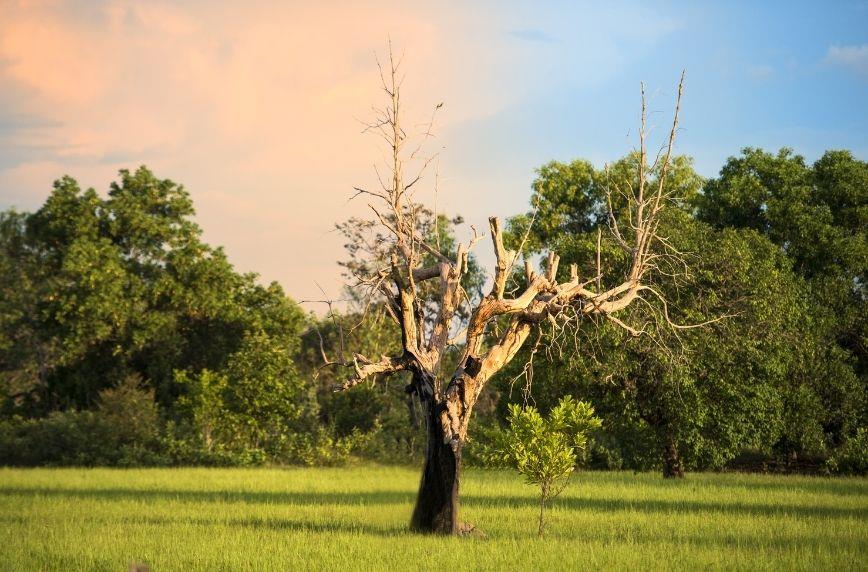There are few grander additions that you can make to your yard than planting a tree. They’re like nature’s towers, presiding over your garden with a sense of security and permanence. But when the leaves start to wilt in the middle of July, and the bark starts peeling, that sense of permanence can suddenly disappear. Even a tree’s life can be cut short. These are the common causes of tree death.
Disease
When we think of illness, we think of a case of the sniffles or chickenpox. So, it’s hard to imagine something like a tree getting sick. But there are a plethora of diseases that can cause the death of a tree, from root rot to oak wilt. These diseases often occur when foreign pests such as beetles or moths are introduced into an unfamiliar environment. Fortunately, not all diseases are deadly. If you notice signs that your tree is sick, such as marked leaves or pine needles or a thin canopy, contact an arborist for an assessment.
Lack of Nutrition
Trees are famous for their ability to pull nutrition out of the soil in even the most difficult environments. But that doesn’t mean they can survive on any soil. For instance, if a tree is in soil with too much fertilizer, it may be unable to get enough water to survive. A tree may also start to suffer from a nutrient deficiency if its root system becomes damaged from disease or insects. If you notice small, yellowed, or brittle leaves, you may be able to do yearly soil treatments to help support the tree.
Trauma
It’s one of the more frightening moments for a homeowner—lightning strikes the elm tree in the back yard. Or perhaps, a car skids off the road and runs into the ash tree in the front. Trauma of this magnitude is enough to knock a tree over completely, even if you’ve been diligent in taking care of it. But a hurt tree isn’t necessarily a dead one. Sometimes, trimming off the dead branches and cable and bracing a tree can be enough to save it. Again, this is an issue to discuss with your local arborist.
Are You a Professional?
Requests for your services are coming in left and right. Let’s connect and grow your business, together.


